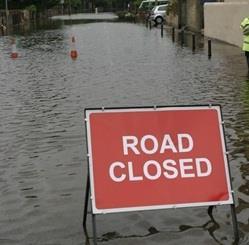Motor insurer Admiral looks like it’s facing a difficult year in 2012. And the rest of the industry is wondering what it will mean for them
Admiral was once feted as the pin-up boy of motor insurance, but now there is widespread industry concern over the company’s performance and what it will mean for the rest of the industry.
Yes, Admiral is still on target to make a healthy 2011 profit, up 10% on 2010’s £265.5m.
But that misses the point: there are worrying signs that the Cardiff-based insurer could be sailing into very stormy waters. Why?
Let’s go under the bonnet and analyse the business in the two parts that generate its profits: its distribution arm and the insurance business.
The distribution arm was responsible for just over half of last year’s £266m pre-tax profits.
Several profit generators in the distribution arm are coming under attack: referral fees, legal expenses and credit hire.
Better disclosure and transparency
Referral fees, which generate 5.6% of profits, are due to be banned. Furthermore, the Office of Fair Trading wants better disclosure and transparency of legal products.
That could result in a cooling off period that would affect Admiral’s penetration in selling legal expenses.
The OFT is also investigating credit hire.
Admiral pulls in revenue by supplying leads to credit hire operators like Helphire. That credit hire market is also suffering from a reduction in motor accident frequency.
Finally, the recession may focus customer attention on the basic insurance product rather than paying for ancillaries.
All these factors are likely to attack the profitability of its distribution arm. Not good.
However, perhaps the insurance arm is more concerning.
There are some worrying signs that Admiral may be at the beginning of the bodily injury cycle that has plagued rivals.
For example, Admiral says in its third-quarter results that it is now dealing with an increase in claims above £100,000.
Directors say that 50% of personal injury claims costs are generated by 2% of claims which are the ones above £100,000.
They reckon that sub-£10,000 claims make up 11% of the claims cost. That seems a bit odd when rivals say it was claims below £10,000 that caused all the rot.
Is Admiral yet to face a deluge of ‘small’ whiplash claims?
Secondly, Admiral had to revisit reserves with extra allocation for 2010 and 2011 at a time when the rest of the industry is largely on top of its reserving issues.
There is real concern that Admiral is yet to face the real pain for 2010 and 2011, years when it grew its business aggressively to take up a 10% market share.
Threat to share price
If these issues lead to a deterioration in profits in 2012, Admiral’s share price will crash further and dividends dwindle.
The consequence of that will dampen the valuation prospects of Royal Bank of Scotland Insurance’s flotation in the middle of next year, but also the eventual listing of Hastings and Esure.
However, if Admiral slides into a series of losses, albeit an unlikely outcome, the consequences could be severe.
Why the alarm? It’s all about the co-insurance model.
In the good times, the co-insurance model (Admiral provides about 27.5% of its own capacity, with the rest spread with reinsurers) is wonderful for investors.
It means the business is “capital light” because so much of the burden is picked up by reinsurers.
That in turn means retained earnings can be distributed among staff as bonuses, boosting morale, and shareholders take home a juicy dividend.
But the flipside of this structure is that if the firm ever makes a series of losses, its whole co-insurance structure could come under threat.
Would reinsurers really be so keen to provide capacity to a business which has burned their fingers?
It has to be wondered how many reinsurers would pick up the slack when its rivals have jumped ship.
Admiral is not as diversified as rivals like Aviva or RSA, which can use surplus reserves from its commercial book to plough into motor.
Admiral has no debt and is yet to make a share issue, so it could go to the capital markets if it ever hit these problems.
But that would be a tough task if investor confidence continues to remain fragile amid the creaking European banking system.
A deteriorating Admiral would could provide an opportunity for its rivals, espeically Royal Bank of Scotland, to grab back some of their lost customers.
Of course, I’m just looking at the worst-case example of what could happen.
Indeed, Admiral has many advantages that could carry it through 2012, such as its low expense base, tightly motor focused management, high staff morale and lack of debt.
The management are determined to prove analysts and journalists wrong. Recently, chief executive Henry Engelhardt, who founded the business in 1993, snapped up £8.7m of company stock, which could be seen as a vote of confidence.
Whatever happens, because Admiral is a FTSE 100 company and the largest employer in Wales, you can be sure that the regulators are watching closely.
Fasten your seatbelts: 2012 is going to be Admiral’s make or break year.





































No comments yet